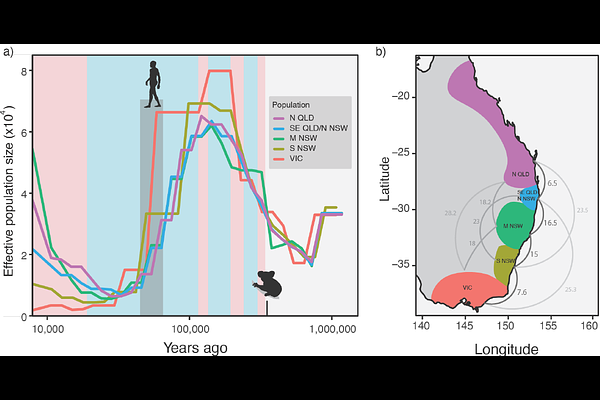Mutation rate estimate and population genomic analysis reveals decline of koalas prior to human arrival

Mutation rate estimate and population genomic analysis reveals decline of koalas prior to human arrival
Kovacs, T. G. L.; Foley, N. M.; Silver, L. W.; McLennan, E. A.; Hogg, C. J.; Ho, S. Y. W.
AbstractThe koala (Phascolarctos cinereus), an iconic Australian marsupial, has experienced substantial historical and contemporary population declines. Identifying the drivers of these declines has been hindered by limited genomic data and uncertainty regarding the koala mutation rate. Here, we provide the first direct estimate of the koala mutation rate, based on four parent-offspring trios, yielding a mean of 6.12x10-9 mutations per base pair per generation (95% confidence interval: 5.03--7.45x10-9). Using this estimate of the rate, we reconstructed the demographic history of koalas using 462 whole-genome sequences sampled across their entire range. Our results refine the estimated timing of past changes in population size, suggesting a large decline beginning {approx}100 kya, before the arrival of modern humans in Australia. This decline occurred in the ancestral koala population, which subsequently split into multiple populations 6--30 kya. These findings provide critical insights into the evolutionary history of koalas, while highlighting the impact of using species-specific evolutionary rates in demographic inference in non-model species. Our estimates of the genome-wide mutation rate for koalas provide valuable resources for future evolutionary and conservation analyses of marsupials.